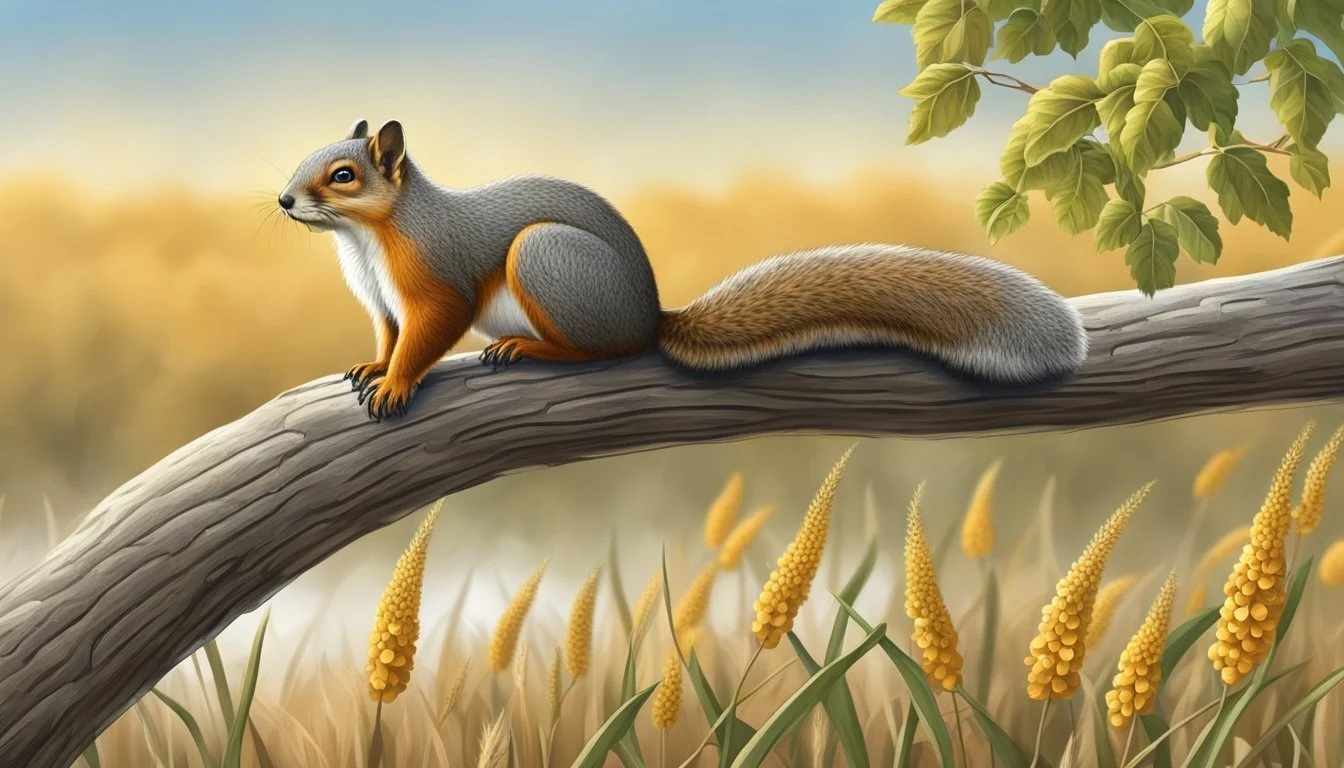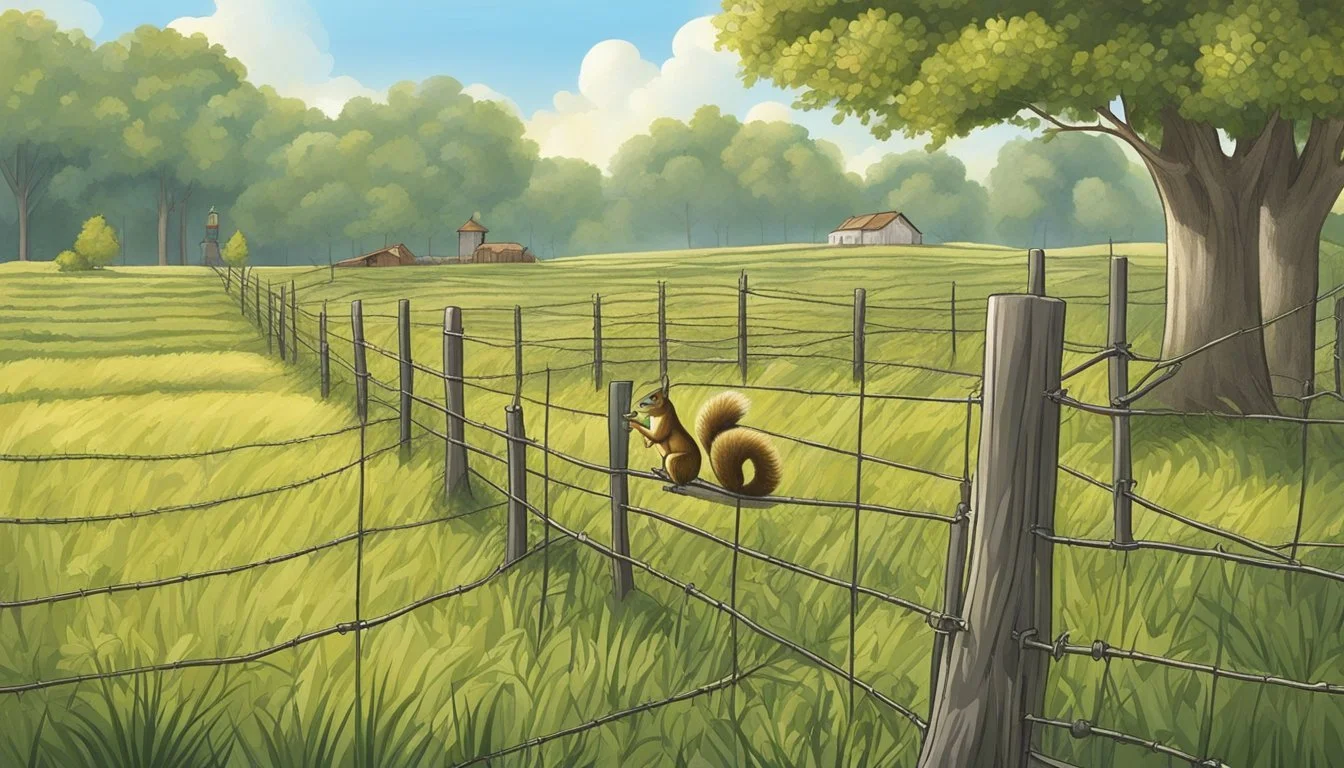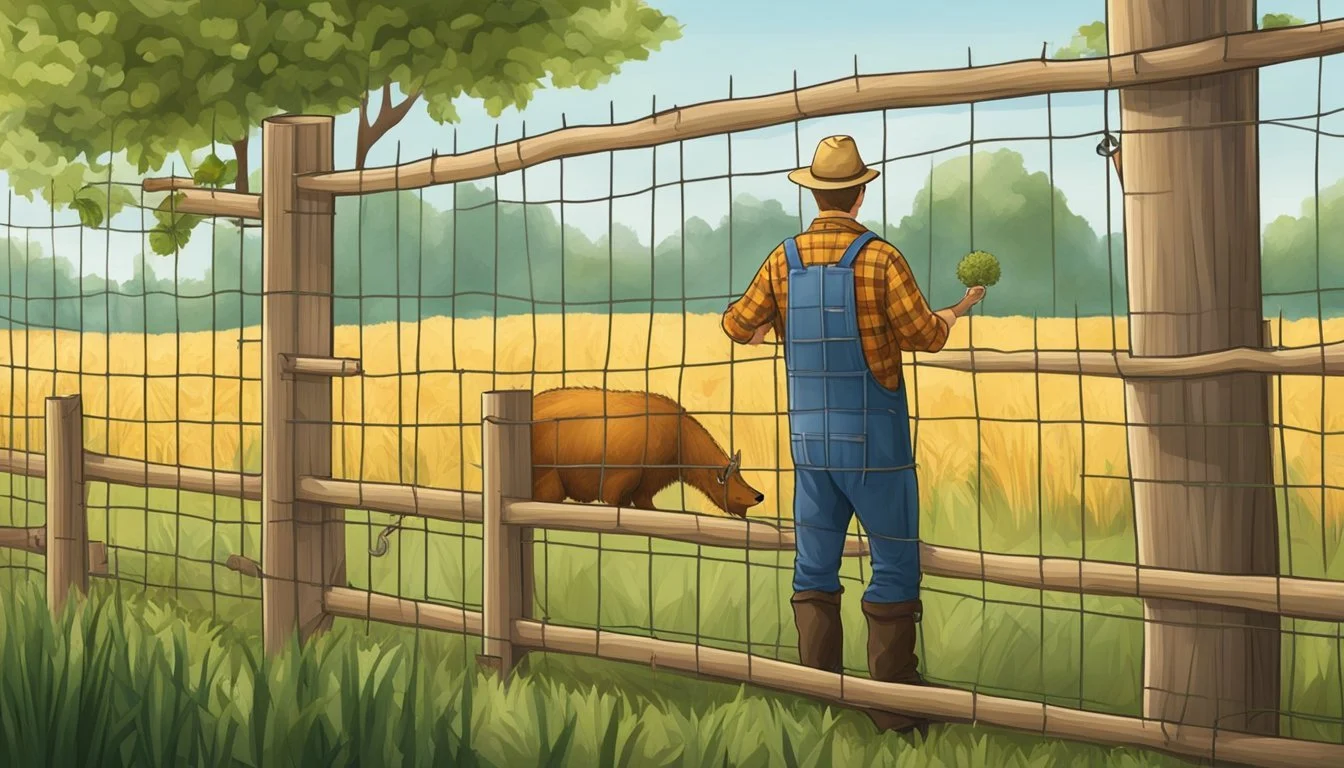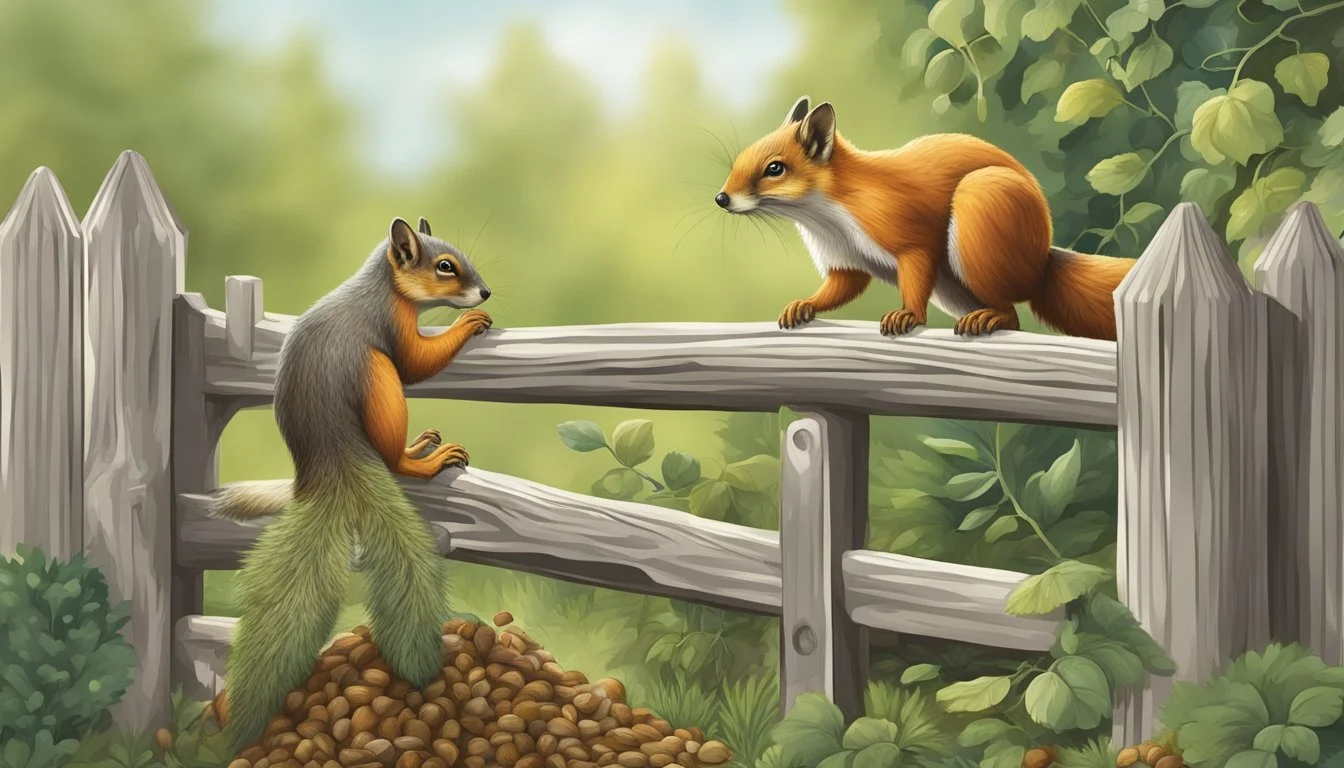Protecting Crops from Fox Squirrel
Effective Strategies for Farmers
Fox squirrels, a type of tree squirrel, are often admired for their agility and playful nature. However, they can also pose challenges for those aiming to protect crops and maintain balanced ecosystems, especially in urban areas. These squirrels are known to adapt to various habitats and can often be found foraging in gardens and farms, leading to potential conflict with human agricultural interests. As they search for food, fox squirrels may feed on a variety of crops, causing significant damage and loss to gardeners and farmers alike.
To effectively safeguard crops from these nimble creatures, it is essential to understand their behavior and implement strategic measures to deter them. The integration of habitat modification and physical barriers has proven to be an effective approach in minimizing the impact of fox squirrels on agriculture. By making crops less accessible or appealing, the likelihood of damage can be substantially reduced, benefitting both the local wildlife populations and the humans who coexist with them.
Managing the presence of fox squirrels in urban settings is a delicate balance. While these animals contribute to the vitality and diversity of urban ecosystems, it's critical to establish practices that protect valuable vegetation without harming the squirrels. Employing non-invasive techniques ensures the coexistence of wildlife with human activities, promoting a harmonious and sustainable environment for all.
Understanding Fox Squirrels
Before delving into strategies to protect your crops, it's crucial to understand the fox squirrel's characteristics, behaviors, and habitats. Recognizing these aspects can inform effective deterrence methods.
Species Identification
The fox squirrel (Sciurus niger) stands out among its peers as the largest tree squirrel in the United States. It exhibits a variety of colorations, ranging from red to gray, and less commonly, black, white, or brown. Distinguishable features include its large eyes and characteristically bushy tail. Unlike the smaller gray squirrel, fox squirrels measure 17-28 inches in length and weigh 17.5-37.5 ounces.
Behavioral Patterns
Fox squirrels are primarily active during the early hours of the day and can be somewhat shy in comparison to other squirrels. Their behavior is highly adaptive to both urban and rural environments. These squirrels forage for a wide range of foods, affecting their interactions with human property, especially gardens and crop fields.
Habitat and Distribution
The habitat preferences of fox squirrels are diverse, but they thrive in open canopy forests with sparse understory, such as longleaf pine savannahs. Their distribution spans across various regions in North America, with differing patterns based on environmental factors like habitat loss and competition, primarily with gray squirrels.
Fox Squirrel Diet and Foraging
In the realm of crop protection, understanding the diet and foraging patterns of the fox squirrel is vital. These animals are opportunistic foragers with a strong preference for various seeds and nuts, which can impact local agriculture and tree populations.
Common Foods
Fox squirrels have a diverse diet predominantly composed of hard mast such as acorns and pecans, but they also consume a variety of seeds, nuts, berries, and other plant material. In agricultural areas, they may target corn and sunflower seeds. In urban settings, they are known to exploit bird feeders or gardens, eating virtually anything available.
Nuts/Seeds: Acorns, pecans, walnuts, hickory nuts, sunflower seeds
Agricultural: Corn, grains, occasional fruits
Other Plant Material: Berries, tree buds, bark, and flowers when other sources are scarce
Feeding Habits
Fox squirrels exhibit remarkable foraging behaviors that include both gathering food for immediate consumption and caching for future use. They are diurnal, primarily foraging in the early morning and late afternoon. Fox squirrels make use of their keen sense of smell to locate food and are known to engage in "deceptive caching" where they pretend to bury food to throw off potential thieves.
Active Hours: Early morning, late afternoon
Foraging Techniques: Smell-based location, deceptive caching
Range: They can travel several miles in search of food
Nut Trees and Seed Consumption
The fox squirrel's affinity for nuts and seeds has significant implications for nut tree populations, as their caching habits can contribute to tree dispersal. Conversely, their sometimes heavy predation on acorns, pecans, and fruits can negatively affect the reproductive success of these plants.
Impact on Trees:
Positive: Cache seeds which may lead to new tree growth
Negative: Consume large quantities of seeds, reducing potential for new tree growth
Crop and Garden Protection Strategies
In the pursuit of safeguarding gardens and crops from the tenacious fox squirrel, it becomes essential to employ strategies that are both effective and humane. These strategies encompass the construction of physical barriers, the application of various repellents and deterrents, and the adoption of cultural practices that discourage these agile creatures.
Physical Barriers
Physical barriers serve as the first line of defense against fox squirrels. Chicken wire or hardware cloth can be used to create enclosures around individual plants or garden beds. It's important to bury the fencing at least 6 inches deep to prevent squirrels from digging underneath. For trees, wire mesh wrapped around trunks can prevent squirrels from climbing them. Building a robust fence around the perimeter of a garden or yard that overhangs outward can also be an effective deterrent, making it difficult for squirrels to gain access.
Chicken wire: Enclose vulnerable plants; bury edges.
Wire mesh: Wrap around tree trunks.
Hardware cloth: Create dug-in barriers.
Fencing: Erect perimeter fences with outward overhangs.
Repellents And Deterrents
The use of repellents incorporates both scent-based options, such as garlic or commercially available products, and taste aversion strategies. Homemade mixtures containing hot peppers can dissuade squirrels when applied to plants. Furthermore, motion-activated sprinklers can serve as a dual-purpose deterrent, startling squirrels with a sudden spray of water and irrigating the garden at the same time.
Garlic and hot peppers: Apply scent-based repellents.
Commercial products: Use according to label instructions.
Motion-activated sprinklers: Install to startle and hydrate.
Cultural Practices
Cultural practices involve modifying the environment to prevent squirrel habitation and foraging. Removing food sources such as fallen nuts and seeds reduces attraction to the area. Trimming tree branches away from buildings and other structures minimizes access points, and cleaning up debris can discourage nesting.
Remove attractants: Clean up nuts, seeds, and fruit debris.
Access minimization: Trim overhanging branches.
Nesting prevention: Maintain a tidy yard and garden devoid of excess materials.
Habitat Management and Wildlife Preservation
Effective habitat management coupled with wildlife preservation strategies play a crucial role in the protection of crops against fox squirrels. These methods balance the ecosystem needs with agricultural interests, ensuring long-term sustainability for both wildlife and human activities.
Natural Predators
Fox squirrels have natural predators that help regulate their populations. Birds of prey such as hawks and eagles, along with terrestrial predators like foxes and bobcats, are integral to the ecosystem as they keep squirrel numbers in check. Maintaining habitats that support these predators is essential, as they contribute to controlling potential crop damage by preying on game animals like squirrels.
Habitat Conservation
Habitat loss is a significant threat to wildlife, including the fox squirrel. Preserving hardwood forests and longleaf pine stands is paramount in providing adequate food and shelter for squirrels and countless other species. By keeping forest cover intact, especially around stream channels, the natural environment is nurtured, benefiting not only the squirrels but also the larger ecosystem, including the southern flying squirrel and other wildlife.
Controlled Wildlife Management
Selective wildlife management practices can be employed to limit crop damage by fox squirrels. This includes fostering habitats that are less conducive to squirrels while still supporting a diverse range of wildlife. Strategies might involve the establishment of buffer zones where selective hardwood harvesting is carried out, thus reducing excess squirrel habitats near crop areas, while ensuring forest cover continuity for other species and preventing ecosystem disruption.
Fox Squirrel Reproduction
In fox squirrels, successful reproduction is a critical component of their lifecycle, which includes distinct mating behaviors and subsequent care of the young in well-constructed nests.
Mating Behaviors
Fox squirrels typically mate twice a year, with peaks occurring in the winter (December/January) and again in early summer. Courtship involves a chase, where the female leads several males through an erratic path among the trees. Only the most persistent male will eventually become the mate.
Nesting and Rearing Young
After a gestation period of approximately 44 to 45 days, the female fox squirrel gives birth to an average of 3 pups. The young are born in dens, which can be naturally occurring tree cavities or nests constructed from leaves and twigs. These nests, known as "dreys," are usually situated high in the tree canopy. The female exclusively cares for the young, which are weaned at 8 to 12 weeks and soon after gain independence.
Impact on Agriculture and Private Property
Fox squirrels can cause significant disruptions in agricultural settings and damage to private property. Their foraging habits lead to the destruction of various plant species and their nesting behaviors can result in costly repairs for homeowners.
Damage to Trees and Plants
Fox squirrels are known to cause substantial harm to a variety of trees and plants. They frequently dig up and consume seeds and bulbs, which can affect the regeneration of certain tree species and the growth of plants like daffodils and alliums. Moreover, these squirrels can strip the bark from trees, which not only impacts the tree's health but can also lead to its death.
Vegetables and Flower Bulbs: Fox squirrels often forage in gardens and may feed on a wide array of vegetables and flower bulbs, posing a problem for both commercial growers and home gardeners.
Invasion of Homes and Structures
Property damage occurs when fox squirrels take up residence in residential areas. They are known to invade homes and other structures, seeking shelter in attics or nesting in chimneys.
Electrical Wiring and Siding: Once inside, they can gnaw on electrical wiring, posing a fire hazard, while their need to constantly chew can lead to damaged siding or even compromise structural integrity.
Health Risks and Disease Prevention
Fox squirrels can cause substantial damage to crops, but they also pose health risks through disease transmission. Effective prevention measures are vital for protecting both agriculture and public health.
Rodent-Borne Diseases
Fox squirrels can be carriers of various diseases that can impact human health. It is important to manage the population of these rodents and their interactions with crops. In Utah, for instance, it is against the law to relocate squirrels due to the potential spread of disease. One notable risk includes the transmission of tick-borne illnesses. The presence of fox squirrels in agricultural settings increases the possibility of disease spread via ticks and other vectors that they may carry.
Key Rodent-Borne Diseases:
Tick-borne illnesses
Flea-vectored diseases
Ensuring that squirrels do not gather in large numbers or find ample shelter among crops is crucial. The reduction of forage and mast sources can help diminish fox squirrel populations around farmlands. This is beneficial because fewer rodents mean a lower risk of disease transmission.
Parasite Control
Parasites present a significant concern when it comes to health risks associated with fox squirrels. Fleas and ticks that reside on these squirrels can carry harmful bacteria. Ground squirrels are specifically known to host fleas that may transmit diseases to humans. In regards to parasite control, it is important to focus on managing the habitats where these squirrels forage to minimize contact with parasites. Strategies such as habitat modification can be effective to control flea and tick populations.
Parasite Prevention Strategies:
Habitat Modification: Altering the environment to make it less hospitable to squirrels, thus reducing the vector population.
Direct Control: Use of pesticides to target fleas and ticks, with careful consideration to avoid non-target effects.
It is also essential to consider the role of fungi in the disease ecosystem. Fungi in the soil can affect the life cycles of parasites such as ticks and fleas. Therefore, maintaining healthy soil conditions can indirectly contribute to parasite management.
In conclusion, managing the health risks associated with fox squirrels involves a proactive approach to rodent-borne disease prevention and meticulous parasite control.
Fox Squirrel Behavioral Adaptations
Fox squirrels are arboreal rodents displaying various behavioral adaptations to survive and interact within their environment. These behaviors are crucial for foraging, avoiding predators, and competing with other species, such as gray squirrels.
Survival Mechanisms
Fox squirrels possess large eyes, an adaptation that enhances their vision, critical for spotting predators and food resources from high in the trees where they predominantly reside. These vigilant creatures frequently survey their surroundings, their keen eyesight allowing them to navigate and make swift decisions. When faced with threats, fox squirrels react with adept running capabilities, often moving in erratic patterns to confuse predators. Additionally, they leave distinct tracks, a combination of leaps and bounds that can be identified by wildlife enthusiasts in parks and forested habitats.
Their abundance in various North American regions speaks to the success of their survival strategies, which also include creating food caches that are crucial for winter months when resources are scarce. These squirrels have adapted to changing environments, even urban settings, where they can be considered both wildlife and, occasionally, pests to crops and gardens.
Interaction With Other Species
Interaction with other species, particularly in areas where their habitats overlap with those of gray squirrels, is notable. Fox squirrels compete for resources and space, and their behavior reflects these pressures. Their large size can give them an advantage in direct competition; however, in more urbanized environments or parks, they may show a high degree of tolerance and adaptability. Their presence can influence the local ecology, sometimes being seen as threatened by habitat loss or contributing to the displacement of less adaptable species.
Their adaptive behaviors, from the creation of complex nests to their varied diet, allow them to coexist with a range of other species. Nonetheless, the dynamic between fox squirrels and gray squirrels remains a topic of ecological interest as their interactions can shape the composition and health of forest communities.
Attracting Wildlife Responsibly
When managing wildlife in gardens and backyards, it is important to balance the desire for close encounters with the need to maintain the safety and natural behaviors of the animals. Attracting wildlife such as the fox squirrel requires an understanding of their food habits and the impacts on other wildlife.
Feeding and Watching Wildlife
One common approach to enjoy watching wildlife is setting up bird feeders. However, feeders should be chosen and positioned carefully to discourage unwanted attention from fox squirrels. Seed dispersers like these squirrels can be both beneficial for planting future trees but may also disrupt other wildlife and gardens.
Types of Feeders: Use feeders designed to minimize spillage which can attract fox squirrels and other unintended guests.
Tube feeders
Suet cages
Platform feeders with squirrel guards
Location: Place feeders away from easy squirrel access points, like overhanging branches.
Cleanliness: Regularly clean feeders to prevent the spread of disease among bird populations.
Responsible Wildlife Interaction
Interacting responsibly with wildlife is crucial for both the safety of the animals and humans. Feeding wildlife, like squirrels, indiscriminately may lead to dependency and disrupt their natural food habits. It also increases the chance of wildlife becoming a nuisance or causing damage to property.
Pets: Ensure pets are kept at a safe distance to avoid conflicts, especially in areas where wildlife is present.
Food Habits: Encourage natural food habits in squirrels by planting nut-bearing trees rather than offering handouts.
Oak
Hickory
Walnut
By following these practices, one can responsibly enjoy wildlife in their natural habitat without causing harm or imbalance to the existing ecosystem.
Legal and Ethical Considerations
Effective control of fox squirrels to protect crops must be navigated within the framework of legal statutes and ethical guidelines. Adherence to these standards ensures the balance between agricultural interests and wildlife conservation.
Regulations on Wildlife Control
Wildlife Control: When considering wildlife management, particularly for species like the fox squirrel, state and federal regulations come into play. It is crucial that individuals and entities refer to the Endangered Species Act (ESA), as fox squirrels were historically listed due to habitat loss. Additionally, state departments of wildlife provide guidelines for population dynamics management, often requiring permits for certain control measures.
Physical Barriers: As a non-lethal method, erecting physical barriers is typically less regulated; however, local ordinances may dictate the acceptable types of structures and their placement, ensuring minimal impact on wildlife movement and habitat.
Ethical Treatment
Predator Urine: Employing predator urine as a deterrent falls under ethical scrutiny. While not necessarily illegal, its use raises questions about the stress induced on prey species and the potential for habituation.
Humane Control: Ethical considerations stress the importance of humane techniques for controlling fox squirrel populations. This includes methods that do not cause undue suffering or disrupt ecological balance, emphasizing the use of exclusion and habitat modification over lethal means whenever possible.
Frequently Asked Questions
In tackling the challenges posed by fox squirrels to crops, farmers employ a variety of strategies. These range from deterrents to habitat modification, ensuring both the protection of their yields and consideration for wildlife.
What methods do farmers utilize to safeguard their fields from fox squirrels?
Farmers may use noise-making devices or employ regular patrolling to disturb and deter squirrels. They also engage in habitat management, such as removing den trees or managing the landscape to make it less attractive to squirrels.
What are effective deterrents to prevent squirrels from consuming garden vegetables?
Chemical repellents and predator urines can be applied to dissuade squirrels from approaching garden vegetables. Some individuals also protect vegetation from squirrel damage by creating physical barriers such as netting or wire covers.
How do agricultural producers mitigate the impact of squirrels on their crops?
Agricultural producers often integrate crop rotation and planting schedules that do not align with peak squirrel foraging times. They might also use tree wraps or guards to protect young trees and their fruits from squirrels.
What are humane ways to discourage fox squirrels from invading croplands?
Farmers may install motion-activated sprinklers or use ultrasonic devices as humane deterrents. They also focus on reducing food sources by cleaning up fallen fruits and nuts that might attract fox squirrels.
Can physical barriers be an effective solution for protecting crops from squirrels?
Physical barriers such as plastic netting, metal collars on trees, or wire mesh can be very effective. These barriers prevent squirrels from reaching the crops without harming the animals.
What types of crop protection strategies are available that specifically target tree squirrels?
Crop protection strategies targeting tree squirrels include selecting squirrel-resistant plant varieties and using tree squirrels managing habitat and controlling damage techniques to alter the landscape, making it less supportive of squirrel populations.











